I needed to get out for a while and so I decided to head out to the Sabah Museum. Museums aren’t really Shawn’s thing so I had no qualms about visiting the Sabah Museum on my own. To be totally honest with you, I did not expect much. I needed a change in atmosphere and the museum was something that I had been putting off for a while. In the end, the museum did manage to surprise me.
The Sabah museum provides a lovely environment in which you can learn about the history of the city and that of the Malaysian part of Borneo. It is also a great place to visit with kids because there are plenty of exhibits that the children can enjoy.
This post may contain affiliate links. As an Amazon Associate, I earn a small commission from qualifying purchases at no additional cost to you. Read my disclaimer for further information.
Table of Contents
The Sabah Museum Entrance Fees
The entrance fee for the Sabah museum was RM 2 for Malaysian nationals and RM 15 for foreigners. The ticket counter is located right in front of the main building. I would suggest keeping your ticket safely because they may check it at other points in the complex.
The Main Museum Building
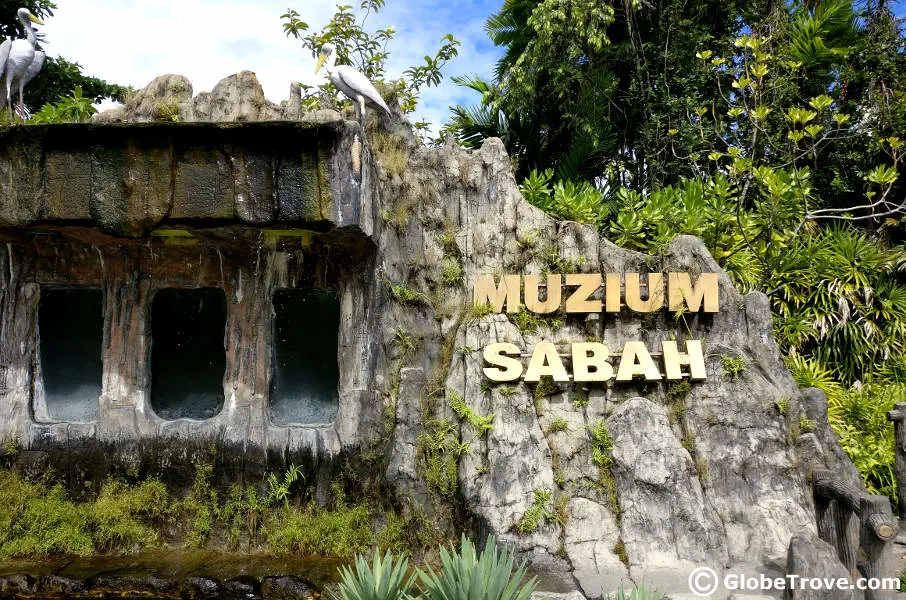
The main building of the Sabah museum can be divided widely into 7 parts.
- The Marble Hall
- The History Gallery
- The Archaeology Gallery
- The Head Hunting Gallery
- The Ethnography Gallery
- The National History Gallery
- The Ceramics Gallery
The Marble Gallery
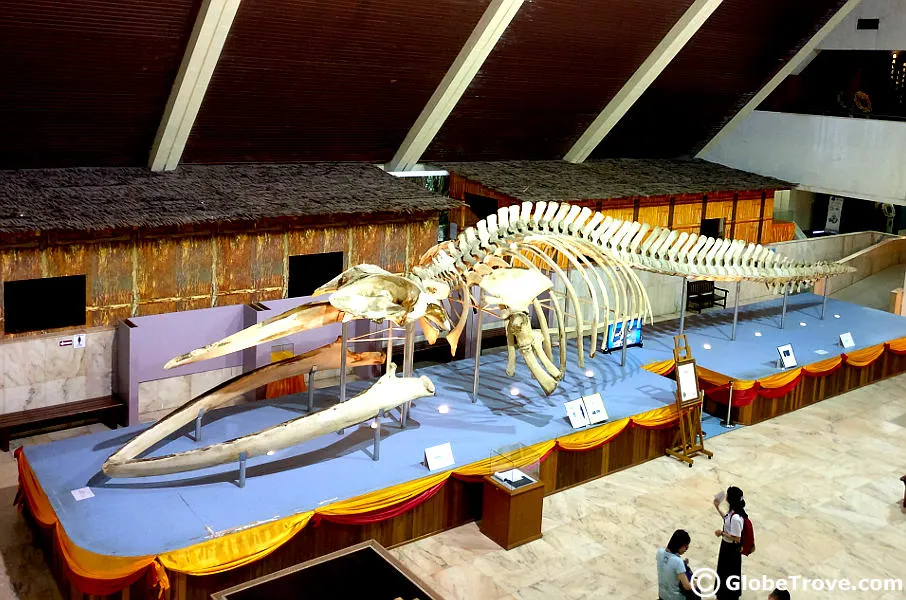
The first thing that greets you as you enter the museum are enormous skeletal remains. My first thought was dinosaur! It was only when I walked closer and read the information that it was a Bryde’s whale. It is a species that has found its way to the endangered species because of the indiscriminate hunting of whales.
The Bryde’s whale that is on display is said to be the largest skeleton on display in Malaysia and is 18.6 meters long.
The History Gallery
I was overwhelmed by the amount of Western influence that Borneo has had over the years. The British, the Americans, the Spanish and the Dutch have all set their toes here. Sabah has had its own set of Kings who ruled it too.
The island has been through much since the 12th century till its independence in 1963. The history gallery attempts to give you a few glances into the past. For a person who does not know anything about Sabah’s history it gets overwhelming.
The Archaeology Gallery
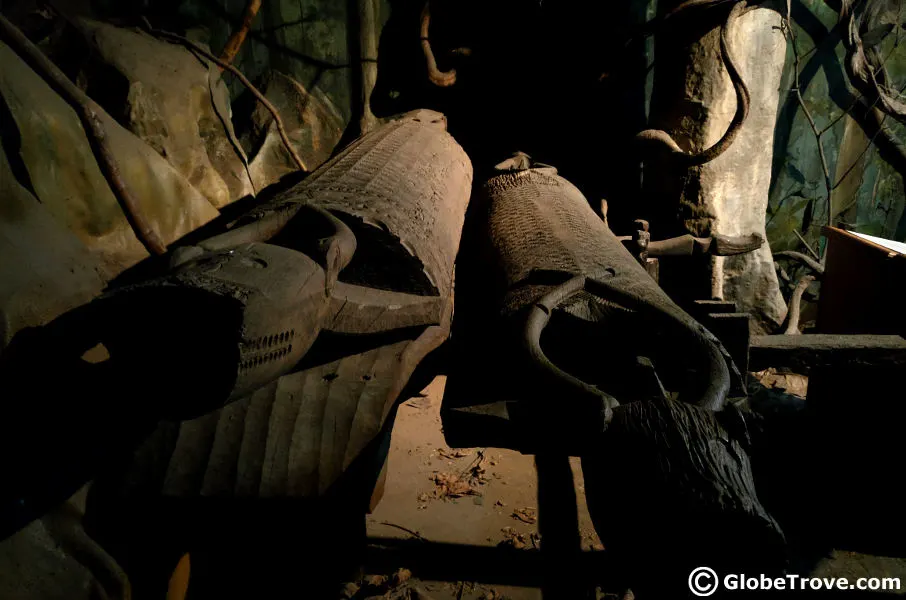
The Archaeology gallery houses a number of different artifacts that have been excavated from different archaeological sites around Borneo. Pottery, stone tools, bone tools and caskets were among some of the artifacts that caught my attention.
One of the activities that I found interesting was handling the stone tools. I’m pretty sure they were replicas but holding them gave me an understanding of the weight and the feel of the tools. It was a novel experience.
What did I learn? Stone tools are heavier than I expected and way sharper!
Another interesting exhibit was that of the caves. Most of the artifacts were excavated from caves. The reason behind this is that the settlements were usually in caves in order to protect the inhabitants from extreme weather like heat, cold and rain.
Caves were also used as burial sites. The caskets were made of logs of wood and had carvings on them. A few of these caskets are on display at the Archaeology gallery of the Sabah Museum.
The Head Hunting Gallery
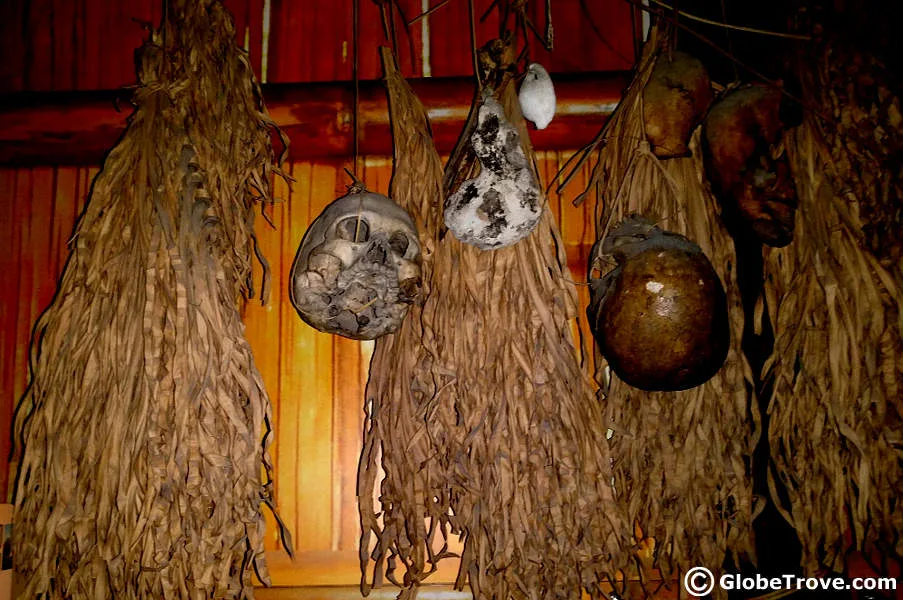
Today the term head hunting refers to the search of candidates for a job. Centuries ago in Borneo the definition was very different. Head hunting quite literally meant chopping off someone’s head and bringing it home.
The skulls that were collected were seen as a sign of bravery. From what I read head hunting wasn’t just random. It occurred when two tribes were feuding over an issue. When the issue was not resolved the men of the village would resort to head hunting till a settlement was reached.
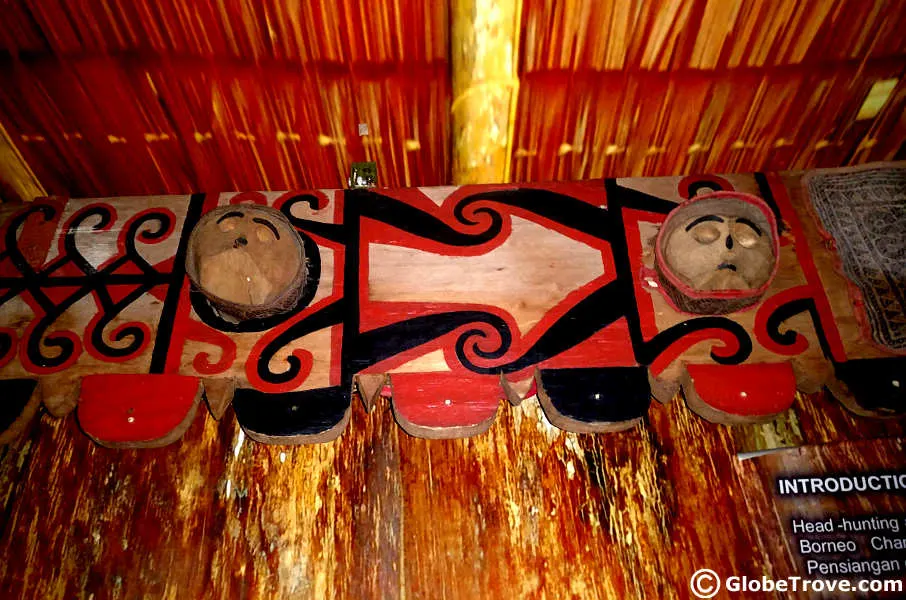
The skulls were kept as heirlooms and passed down from one generation to the next. It was believed that these skulls brought good fortune for the family that owned them. It was also believed to protect the village from bad spirits and epidemics.
Head hunting took place in three ways.
- In large groups where the skulls were held by the community.
- In small groups where the skulls were kept by a family.
- By an individual to prove strength and win a bride.
In order to pay respect to the spirits the tribes and families would frequently perform rituals. The exhibit also mentions that head hunting was in no way related to cannibalism. I guess it was their way of fighting wars and it was as gruesome as all wars are bound to be.
The Ethnography Gallery
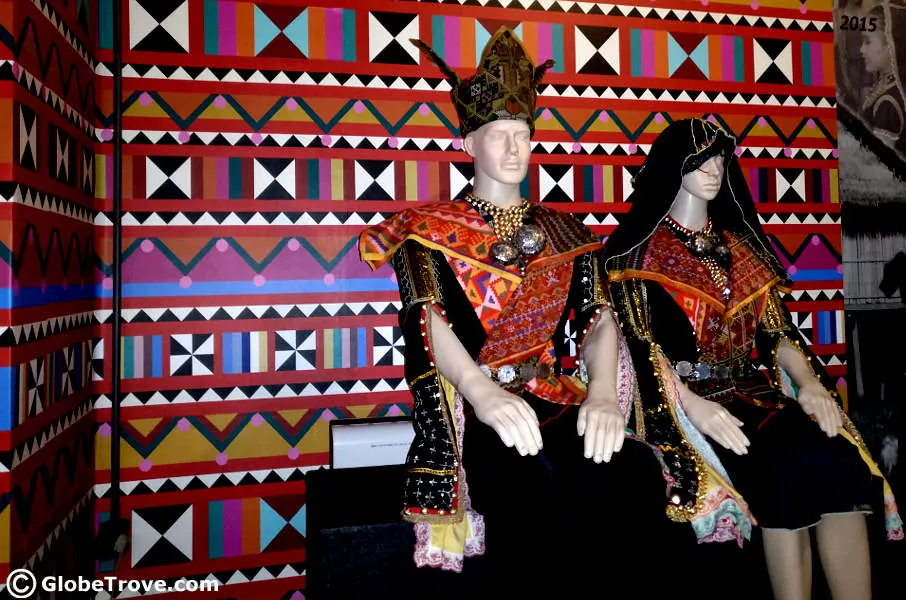
32 native tribes inhabited Sabah and each had their own traditions. The Ethnography Gallery of the Sabah museum tries to show case and preserve the culture of these tribes. From the textiles they wove to the clothes they wore, you can see it all. In fact it also has an entire side that is dedicated to the hats and baskets that were woven by them.
The part of the Ethnography Gallery that I absolutely loved was the interactive room with the musical instruments. Numerous musical instruments that were made of bamboo were strung up with instructions on how one should play them. You could just pick them up and give it a try.
The Natural History Gallery
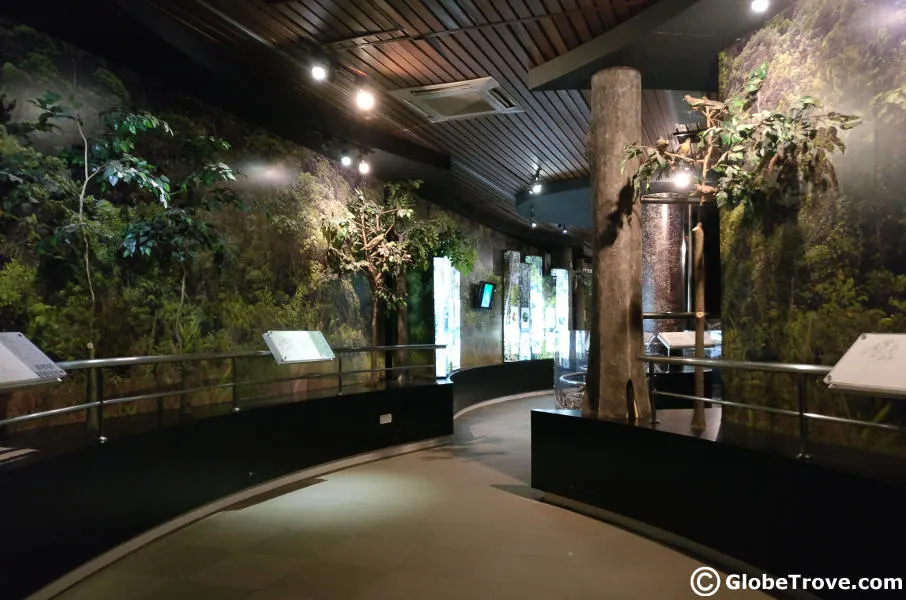
Borneo has a large and diverse ecosystem. The diversity is on land, in the water and the sky. The Natural History Gallery aims to educate people about the diversity and the need to protect it. To tell you the truth, the Natural history exhibit was my favorite. At least part of it was.
The exhibits include a rhinoceros, a baby elephant, a white bear cat and so many other interesting species that I doubt I would have ever had a chance to see. The specimens seem pretty well preserved. It was also interesting to go over the ocean exhibits after my scuba diving session.
I kept trying to find the names of the species that I had seen when I was ten feet deep.
The Ceramics Gallery
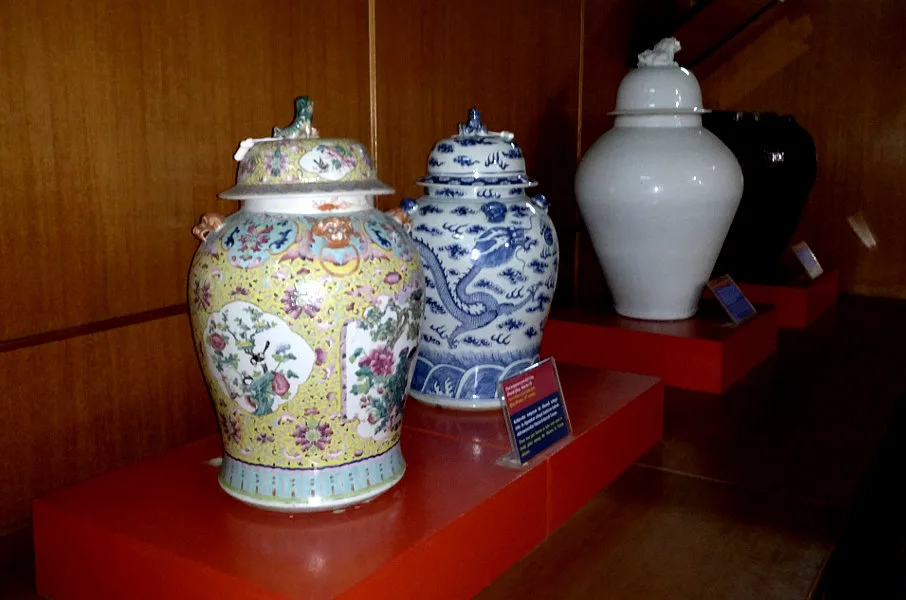
The ceramics gallery was stocked with different kinds of pots. Some were large and some were small. I found the gallery a little dull. Maybe it was because I am not really fond of ceramics.
It may also be that after my recent visit to the Hermitage, the displays did not seem up to the mark. That being said the ceramics gallery was probably my least favorite part of the Sabah museum and I breezed through it real fast.
There Is More To Sabah Museum Than Meets The Eye
At first I thought that the main building was all that there was. As I was getting out I found a pamphlet and I took a look. That’s when I realized that there was far more in the Sabah museum than met the eye. I’m so glad that I didn’t miss it.
The Ethno-Botanical Garden
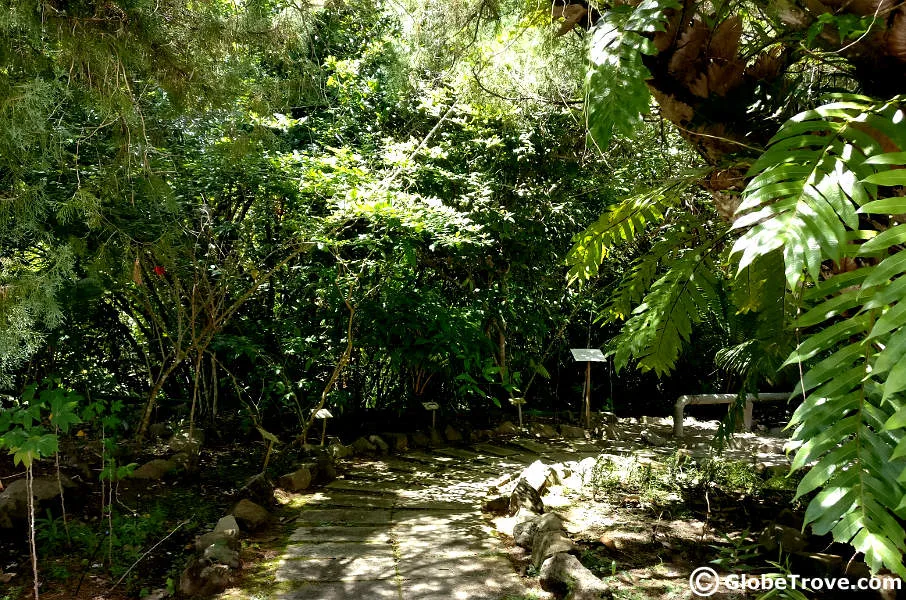
The Sabah museum grounds are covered with a variety of plants. While it may just look like a tropical forest, many of those plants are painstakingly planted. These include a number of herbs and other plant products that are used by the indigenous tribes due to their medicinal value. The pamphlet will tell you where to find each one of these plants.
The Science And Technology Gallery
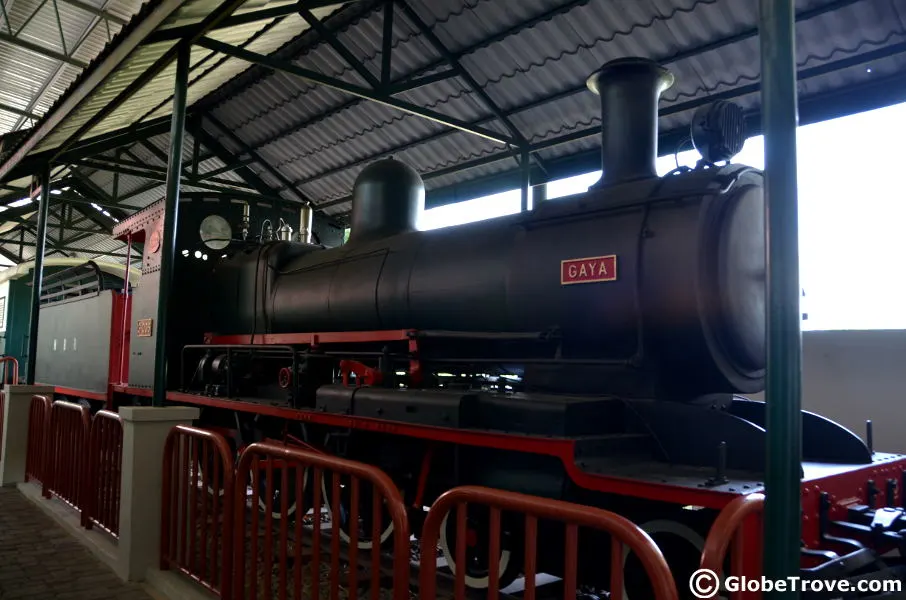
The Science and Technology gallery houses the oil and gas exhibition, the broadcasting exhibition and the North Borneo railway exhibition. While I got a chance to visit the railway exhibition, I missed the other two exhibitions. I realized that only much later and by then I wasn’t going to walk all the way back just to see them.
The Heritage Village
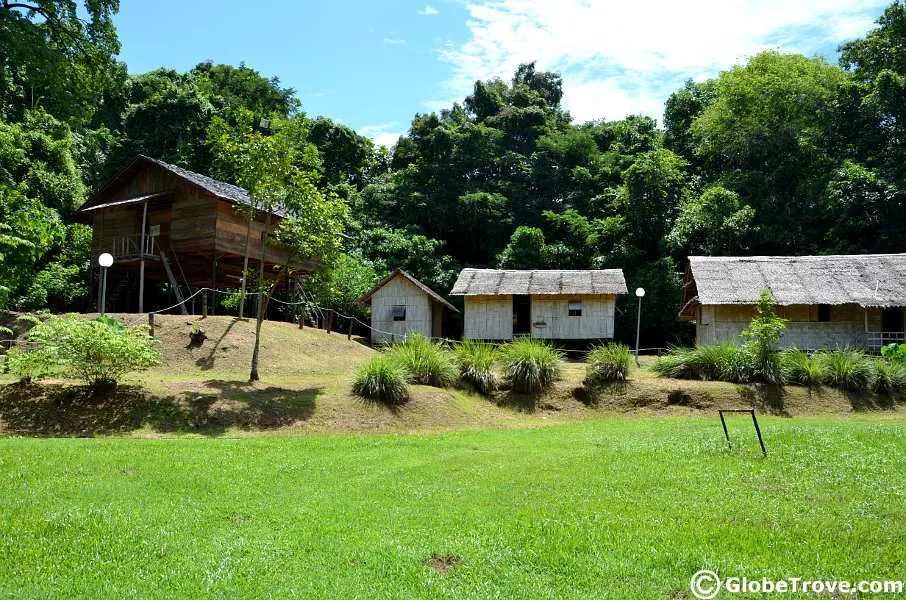
Two phases of Heritage villages are on display. They are a short walk away from each other. It is an interesting walk because you feel as if you are walking through the rainforest for a short while.
The villages house different kinds of houses which serve as displays for the visitors. It gives you a feel of what the tribal villages are like. You can climb into the houses. Just remember to keep your shoes outside when you enter.
The Islamic Civilization Museum
The Islamic civilization museum is free to visit with your museum ticket. Its aim is to educate people about Islam. A 15 minute walk inside the building will show you a collection of brass wear, swords, Qurans, betel nut displays and even miniature mosques.
The Sabah Museum definitely has more to offer than meets the eye. It takes you back in time to visit the past and it also helps you understand your importance in the present. To me the most interesting parts about the museum were the marine displays and the heritage villages.
Don’t skip the museum if you have time and you like learning about culture. It gave me a view of Borneo that I probably wouldn’t have had without it.

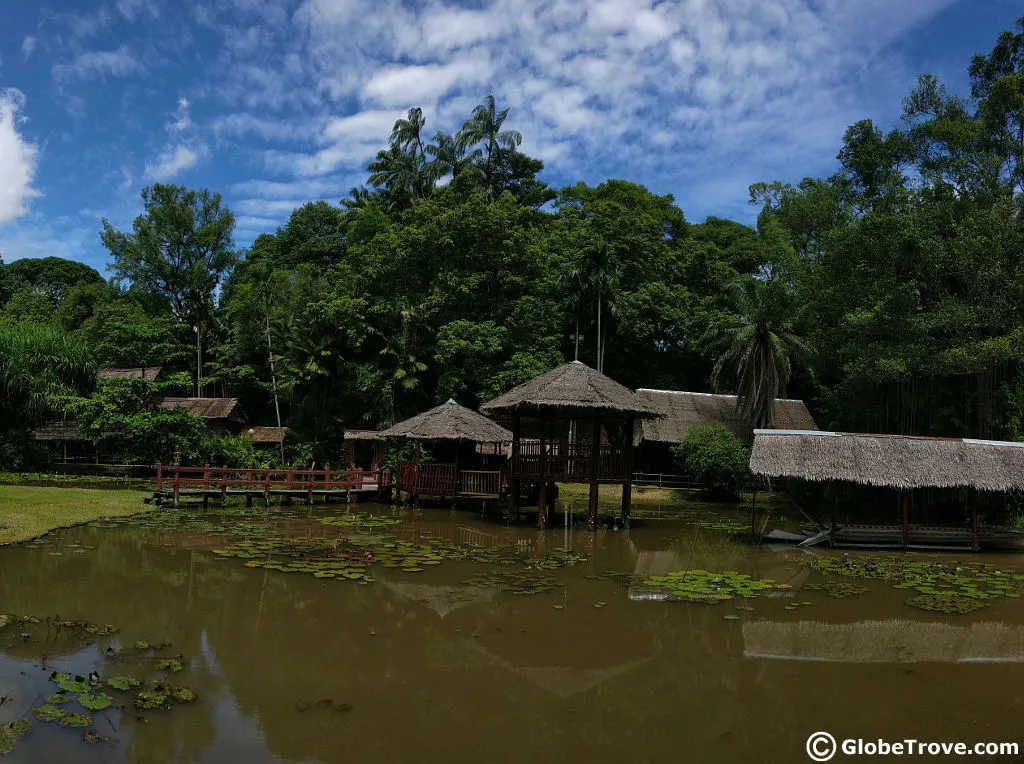
Jas from My Suitcase Journeys
Monday 26th of June 2017
Yikes! The Head Hunting Gallery spooked me a little so not sure if I myself would visit. Very cool museum though! Definitely very educational!!
Penny
Wednesday 28th of June 2017
Spooked me too! I literally jumped a mile in the air when I saw them. It was in a dark corridor and the lights were not on yet.
Laura Harris
Monday 26th of June 2017
I love museums, and this one looks particularly fascinating with a load of stuff I wouldn't find anywhere else. Thanks for sharing!
Penny
Wednesday 28th of June 2017
It was fascinating to say the least. I spent a long time browsing through it!